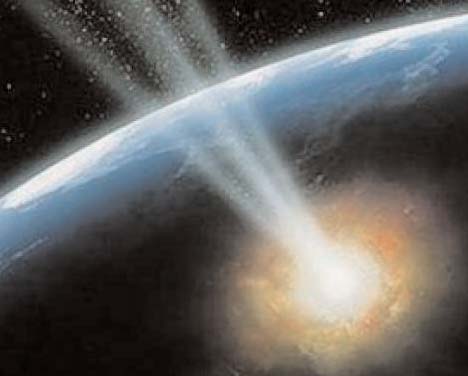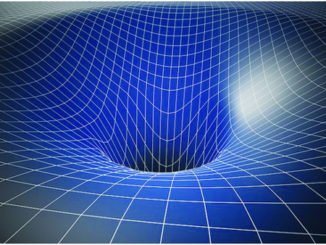
JOHANNESBURG (TIP): Scientists have found the first-ever comet material on Earth – a black pebble filled with diamonds – left behind when an ‘apocalyptic’ comet exploded over modern-day Egypt, 28 million years ago. The discovery by a team of South African scientists and international collaborators is the first definitive proof of a comet striking Earth and could also help unlock the secrets of the formation of our solar system. The comet exploded, raining down a shock wave of fire which obliterated every life form in its path, and heating up the sand beneath it to a temperature of about 2,000 degrees Celsius, researchers said. It resulted in the formation of a huge amount of yellow silica glass which lies scattered over a 6,000 square kilometre area in the Sahara. A magnificent specimen of the glass, polished by ancient jewellers, is found in 18th dynasty Egyptian pharaoh Tutankhamun’s brooch with its striking yellow-brown scarab. “Comets always visit our skies – they’re these dirty snowballs of ice mixed with dust – but never before in history has material from a comet ever been found on Earth,” said Professor David Block of Wits University.
Comet fragments have not been found on Earth before except as microscopic sized dust particles in the upper atmosphere and some carbon-rich dust in the Antarctic ice. The research began with a mysterious black pebble found years earlier by an Egyptian geologist in the area of the silica glass. After conducting highly sophisticated chemical analyses on this pebble, the authors came to the conclusion that it represented the very first known hand specimen of a comet nucleus, rather than simply an unusual type of meteorite. Lead author Professor Jan Kramers of the University of Johannesburg describes this as a moment of career defining elation. “It’s a typical scientific euphoria when you eliminate all other options and come to the realisation of what it must be,” he said. The impact of the explosion also produced microscopic diamonds. “Diamonds are produced from carbon bearing material. Normally they form deep in the Earth, where the pressure is high, but you can also generate very high pressure with shock. Part of the comet impacted and the shock of the impact produced the diamonds,” said Kramers. The team have named the diamondbearing pebble “Hypatia” in honour of the first well known female mathematician, astronomer and philosopher, Hypatia of Alexandria. “NASA and ESA ( European Space Agency) spend billions of dollars collecting a few microgrammes of comet material and bringing it back to Earth, and now we’ve got a radical new approach of studying this material, without spending billions of dollars collecting it,” said Kramers.





Be the first to comment